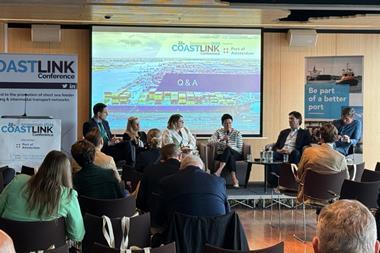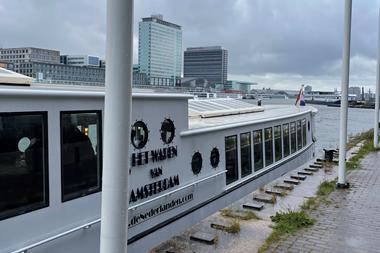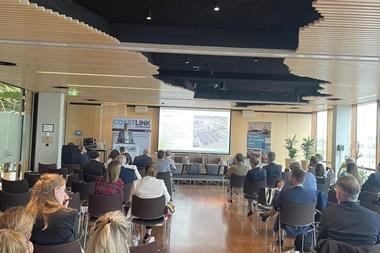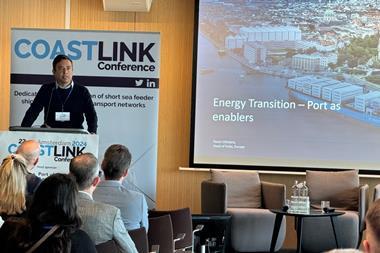Ports in the UK face a lot of issues related to planning, “but power is the thing that is keeping us awake at night,” Geraint Evans, Chief Executive of the UK Major Ports Group, told delegates.
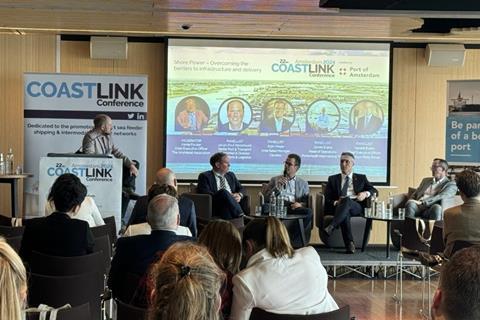
A panel discussion around “Shore power – overcoming the barriers to infrastructure and delivery” cover issues around investment, take-up, grid capacity and other challenges for ports and terminals under pressure to provide shore power for vessels.
Reflecting on the UK picture, Geraint Evans said: “There is a lack of thinking about ports, especially major ports, as a strategic sector and what they will need to thrive and develop – road, rail and power.”
There are concerns around “a lack of thinking from a government perspective and then into the National Grid”, he said. “We feel that we are trying to explore the right projects and take them forward but we shouldn’t be having these depths of discussions about power. There is a real risk that we drive away private investment.”
For shore power and other electrification needs, estimates range from multiples of four to 15 in what ports will need in terms of power in the coming years, said Geraint Evans. “We need to be making that case to governments at all levels. Shore power should not be as big an issue as it is; power should not be as big an issue. We need to make sure that ports are considered in the same way as airports or other CNI (critical national infrastructure).
Arjan Meijer, Area Sales Manager at Cavotec, said: “Unfortunately, we see shore power projects postponed a couple of years because there is no grid power. There are semi-temporary solutions with batteries and generators, but that is an issue. Energy companies need to be encouraged to make the investment.”
Permitting is another issue, he added. “Surprisingly, when a tender is granted or a contractor awards, all kinds of permit processes are needed to start it up after that. If we all think about that in an earlier stage, we could benefit.”
James Evans, Head of Operations at Portsmouth International Port, explained the port’s Sea Change project to design, build and operate a shore power system across its three busiest berths.
Portsmouth, a municipal council-owned port, had to take a risk, agreeing to pay £3m for securing access to the last remaining energy in its area before there was any guaranteed funding or support for the project.
“If we had missed out, we would have had a significant problem to deliver on our customers’ needs and wants,” said James Evans.
Subsequently, the port gained funding support, including from the UK government’s ZEVI (Zero Emission Vessel and Infrastructure) fund, as part of a demonstration programme.
The ‘main driver’ in the project has been Portsmouth’s main customer, Brittany Ferries, said James Evans, but the shore power provision will benefit others and, it is hoped, attract new port users. Critically, the system allows for simultaneous powering of multiple vessels with different AC frequencies, voltages and ship-shore connections, and the energy supply is on a green tariff.
“The technology created for shower power may not be the same everywhere,” he said. “There are different connection types and different frequencies – we have to cater for the wants and needs of our known customers and the potential of customers we don’t know of yet.”
As a service of the council, the port had a duty to do its part, including in helping to improve air quality for local residents, he concluded – but there is a potential downside for any early adopters of shore power. “If the technology advances quickly, there is a risk of equipment obsolescence.

